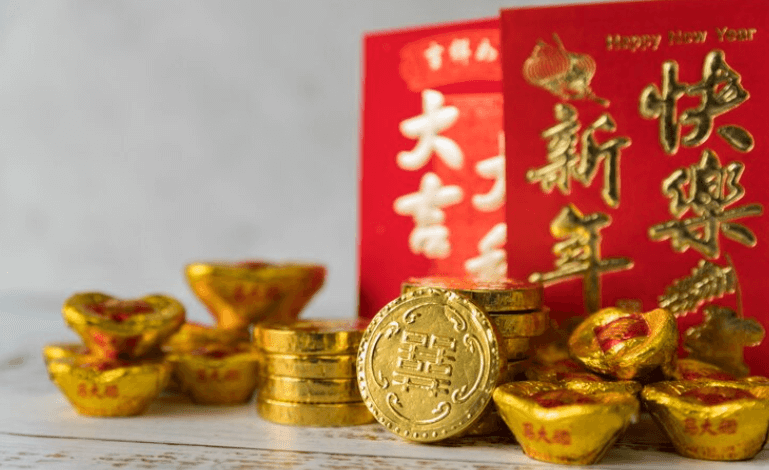Understanding the Purity and Quality Standards of Chinese Gold

Chinese gold has a long and prestigious history, dating back thousands of years to ancient dynasties where gold was used for coins, jewelry, and decorative artifacts. Today, Chinese gold remains highly valued, not just for its aesthetic appeal but also as an investment. However, the purity and quality of gold vary significantly, making it crucial for buyers to understand these factors before purchasing. In this article, we will explore the purity and quality standards of Chinese gold, how to assess its value, and what to look for when buying gold in China or from Chinese sources.
1. The Historical Importance of Gold in China
Gold has always held a prominent place in Chinese culture. From ancient dynasties to the modern era, gold has symbolized wealth, power, and prosperity. In ancient China, gold coins were used as currency, and it was a preferred material for crafting royal and religious artifacts. The color gold is also closely associated with the emperors of China, representing good fortune and authority.
This long-standing cultural significance has led to China being one of the largest consumers of gold globally. In fact, China is not only a significant consumer but also one of the world’s leading gold producers. With this strong demand, it’s no wonder that gold purity and quality standards have become highly developed in the country.
See also: Top Screen Door Trends for Stylish Gold Coast Living in 2024
2. What Does Purity in Gold Mean?
Gold purity refers to the amount of pure gold in an item, usually expressed in karats or as a percentage. The higher the karat, the more pure the gold is.
a) Karat System
The karat system is one of the most common ways to measure gold purity. It ranges from 24-karat (which is 99.9% pure gold) to 9-karat (which contains 37.5% pure gold). The most common purities in China include:
- 24-karat gold (99.9% pure): Often referred to as “pure gold” or “full gold” in Chinese markets.
- 22-karat gold (91.6% pure): This is a high-quality form of gold that is often used for jewelry.
- 18-karat gold (75% pure): A popular choice for modern jewelry as it combines durability with a high percentage of gold.
b) Percentage System
The percentage system is a more direct way to describe gold purity. For example:
- 999 Gold (99.9%): Known as pure gold in China, this is typically used in bullion coins and high-end jewelry.
- 916 Gold (91.6%): Commonly used in high-quality jewelry, especially for items that need to retain some strength.
- 750 Gold (75%): This refers to 18-karat gold and is popular for wearable jewelry as it is less prone to scratches and bending.
Understanding these measurements helps in making informed decisions when purchasing gold in China or elsewhere.
3. Chinese Gold Standards
The Chinese government regulates the purity and quality of gold to protect consumers and maintain international trade standards. The purity of gold sold in China must meet specific guidelines set by regulatory bodies. Here are some key aspects of Chinese gold standards:
a) China’s National Gold Standards (GB Standards)
China’s National Standards for gold, known as GB Standards, provide clear guidelines for the classification and grading of gold products. The most relevant GB standards for gold purity include:
- GB/T 11887-2012: This standard outlines the technical requirements for gold jewelry, including the purity and markings required.
- GB/T 4134-2003: This focuses on the physical and chemical specifications for gold bullion, including gold bars and coins.
These standards ensure that gold sold in China adheres to strict quality control measures, protecting both buyers and sellers.
b) Markings and Hallmarks
In China, gold products are often marked with specific hallmarks to indicate their purity. For example, a piece of gold jewelry may have a hallmark that reads “AU750” (indicating 75% purity or 18 karats). Similarly, “AU999” means that the gold is 99.9% pure. These hallmarks are essential for determining the value and authenticity of gold items.
4. Factors Affecting the Quality of Chinese Gold
While purity is the most important factor in determining the quality of gold, other factors also influence its value and desirability, especially when it comes to gold jewelry and collectibles.
a) Craftsmanship and Design
The craftsmanship of gold jewelry plays a significant role in its overall quality and value. Chinese artisans are known for their intricate designs, especially in traditional pieces that feature detailed engravings and cultural symbols. High-quality craftsmanship can add significant value to a piece of jewelry, even if the gold purity is lower than 24-karats.
b) Weight and Density
The weight of a gold item is directly proportional to its value, with heavier pieces typically being more expensive. Gold is a dense metal, so even small pieces of pure gold can feel quite heavy. When purchasing gold, it’s important to verify that the weight corresponds to the listed purity, ensuring that you are not overpaying for a lighter or diluted product.
c) Condition
For gold coins and collectible items, the condition of the piece can drastically affect its value. A well-preserved gold coin with minimal wear will be worth more than a similar coin that shows signs of damage or deterioration. Proper storage in temperature-controlled environments and protective cases can help maintain the quality of gold products over time.
5. How to Assess the Purity of Chinese Gold
If you’re buying Chinese gold, whether in jewelry form or as an investment, it’s important to verify its purity before making a purchase. Here are a few methods to assess the purity of gold:
a) Check for Hallmarks
As mentioned earlier, hallmarks or purity markings can be found on most gold items sold in China. Always check for these markings, which typically indicate the karat or percentage of the gold. If a gold item lacks a hallmark, it could be a sign that it is not genuine or not as pure as advertised.
b) Request a Certification
Reputable sellers will provide certificates of authenticity that verify the purity of the gold. These certifications are issued by third-party assayers or grading companies that specialize in testing precious metals. Always ask for certification when purchasing high-value gold items.
c) Test the Gold
There are several tests that can determine the purity of gold, including:
- Acid Test: A simple but effective method, where a small scratch is made on the surface of the gold and acid is applied. Depending on the reaction, the purity of the gold can be determined.
- X-ray Fluorescence (XRF) Test: A more advanced, non-invasive method that uses X-rays to determine the purity of gold without damaging the item.
- Electronic Gold Tester: A handheld device that can measure the purity of gold through electrical conductivity.
6. Where to Buy High-Quality Chinese Gold
Now that you understand the purity and quality standards of Chinese gold, it’s important to know where to find reputable dealers. Whether you’re purchasing in person or online, always buy from trusted sources.
a) Local Gold Markets and Stores
If you’re traveling in China, local gold markets and stores offer a wide selection of gold products. Popular markets like Beijing’s Panjiayuan Market or Shanghai’s Yuyuan Jewelry and Gold Market are known for their high-quality offerings. Be sure to purchase from sellers that provide proper documentation and certification.
b) Online Gold Dealers
For those looking to buy Chinese gold from abroad, reputable online dealers like Apmex, JM Bullion, and GoldSilver offer a range of Chinese gold coins, bars, and jewelry. Always check the reviews and certifications provided by these sellers to ensure authenticity.
7. Conclusion
Understanding the purity and quality standards of Chinese gold is essential for making informed purchasing decisions, whether you’re buying for investment or personal enjoyment. By familiarizing yourself with the karat and percentage systems, Chinese national standards, and proper testing methods, you can confidently assess the value of the gold you’re buying. Always buy from reputable sources, check for certifications, and ensure that the craftsmanship and condition meet your expectations. With these guidelines in mind, you’ll be well-equipped to navigate the exciting world of Chinese gold.





